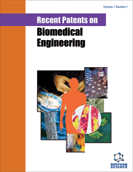Abstract
Bone is composed primarily of an inorganic mineral phase of calcium phosphate and an organic phase of collagen. Reconstruction of large bone defects resulting from trauma, pathological degeneration, or congenital deformity is a significant medical challenge. Due to the limited availability and potential immunogenicity associated with autografts and allografts, tissue engineering has emerged as an alternative strategy to repair, restore, and regenerate lost or damaged tissues using biomaterials, cells, and factors alone or in combination. Polymers, ceramics, and their composites have been widely investigated as biomaterials for the development of synthetic bone graft substitutes. Specifically composites of biodegradable polymers and bioactive ceramics are attractive candidates that closely match the desirable properties of an autograft tissue (e.g. osteoconductivity and osteoinductivity). Composites can be fabricated into a variety of threedimensional (3D) porous structures or matrices to encourage bone regeneration. They can be further enhanced by incorporation of various factors or cells to promote bone healing. Recent advances in nanotechnology have allowed for the fabrication of nanocomposites in the form of particles or nanofibers that mimic the hierarchical arrangement of native bone. Present review focuses on bone repair/regeneration strategies using polymer-ceramic composites and highlights some of the recent important patents in the areas of tissue engineering and orthopedic devices. A basic overview of the physicochemical, structural and biological elements of bone is described to provide design considerations for clinically viable bone graft substitutes. Challenges in the development of tissue-inducing materials capable of eliciting precise control over cellular functions are also discussed.
Keywords: Polymers, ceramics, composites, scaffolds, bone grafts, tissue engineering, drug delivery, biomedical implants, mechanical properties, degradation, bone healing, Regeneration
 11
11

